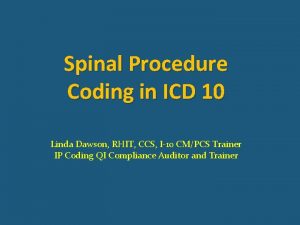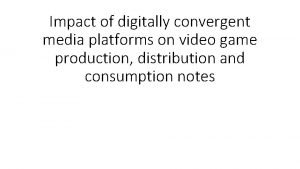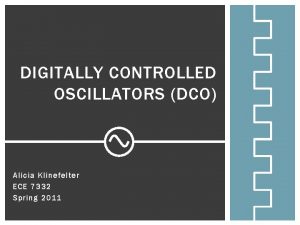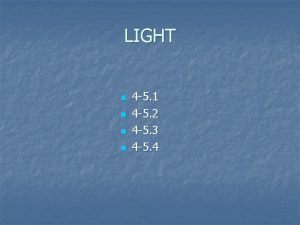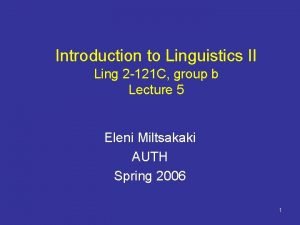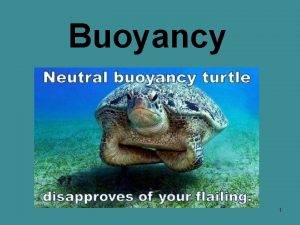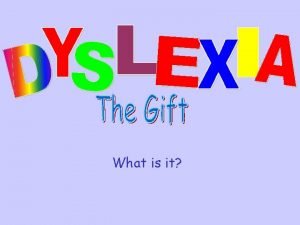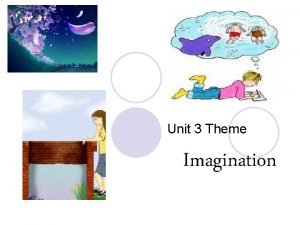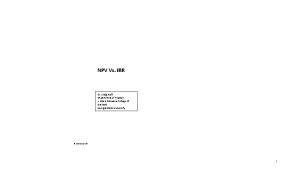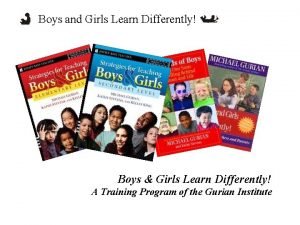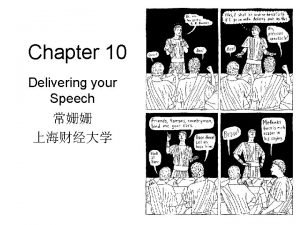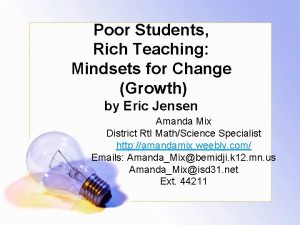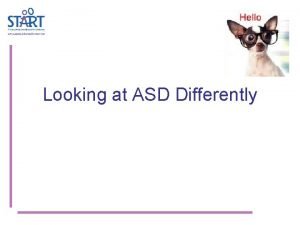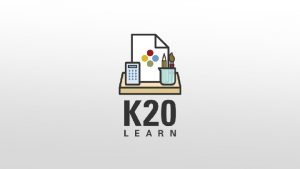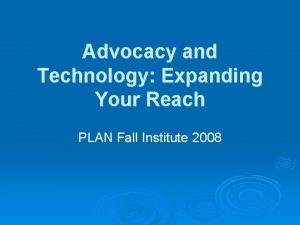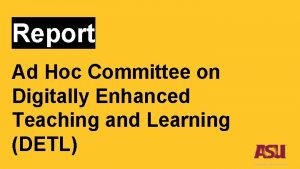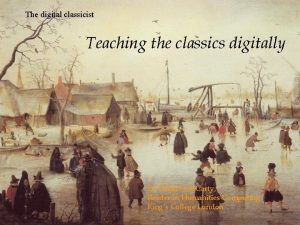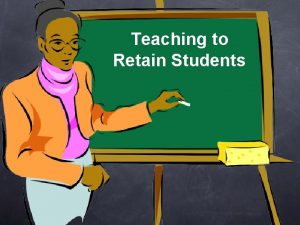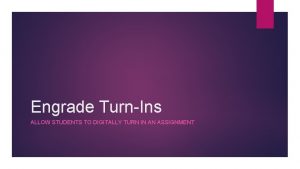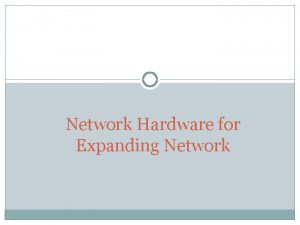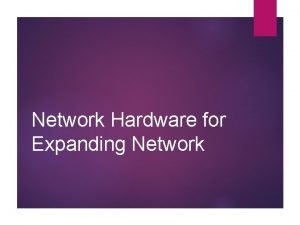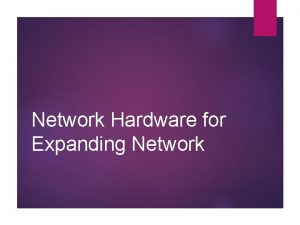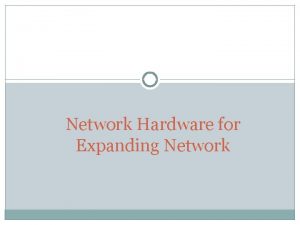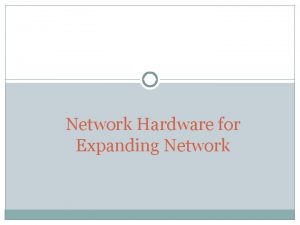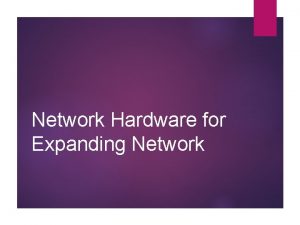Expanding your reach Teaching digitally tethered students differently





















- Slides: 21

Expanding your reach Teaching digitally tethered students . . . differently? Maggi Savin-Baden, Coventry University

Introduction Debate in higher education and across the media about the impact of digital media on learning. Unclear as to whether (too much) digital influence is resulting in imbalances in learning and engagement.

We are digitally tethered

Digital tethering The constant interaction and engagement with digital technology. . . . the sense of being ‘always on’ ‘always engaged’; characterised by wearing a mobile device, texting at dinner, driving illegally while ‘facebooking’.

How we might see it. . . Portal to re-view the issues

Argument We are digitally tethered Digital tethering is resulting in different kinds of networked societies and education systems We are encountering new genres of learning and participation The presentation will argue for the need to: do things differently design for and across disciplinary boundaries. reconsider how learning spaces should-might be constituted

Issues to consider • Unhelpful pedagogy vs technology debate • Liquid learning

Unhelpful pedagogy vs technology debate State of play is still one of ‘just implementing’ technology with little design for learning or theoretical basis. However. . . The use of technology is already a culturally embedded practice: digital practices and uses are evolving For example, the democratization of media production is resulting in young people not only being central to the digital age, but key players in its formulation and (re)creation.

Liquid Learning Liquid learning is characterised by emancipation, reflexivity and flexibility’ (Savin-Baden, 2008), adapting to an everchanging ‘liquid modern’ (Bauman, 2000). Universities need to stretch beyond open courseware and closed virtual environments. Learning needs to be created around a constellation of uncertainties, such as negotiated assessment, mobile, open and flexible learning intentions.

Interesting research • Virtual worlds in higher education • Problem-based simulations • Chat bots


Dilemmas over pedagogical use of Second Life Some of the deep educational problems are: 1. Understanding of ways of creating effective learning situations in immersive virtual worlds such as Second Life 2. Failure to understand which types of scenarios work in which disciplines and which contexts, and why this is the case 3. The poverty of technology-enabled learning projects that are contextually-based 4. The paucity of linking educational models and theories across contexts and disciplines.

Effective activities for virtual world learning Some things that seem to work particularly well are: • Tours of Second Life • 7 minute streamed lectures • Well designed problem-based learning scenarios in a small group (4 students) • Building group with 6 students • Individual quests followed by group discussion • Student-led performances and shows, such as short plays, scenes or fashion shows.

Chatbots – virtual characters that can have a natural language conversation with a human

Past Research � Realism of the chatbot (e. g. Turing 1950) � Anthropomorphic (Baylor 2011) � Seven themes affecting realistic interaction (Morrisey & Kirakowski 2013) � Computer synthesized voices (Clark & Mayer 2008) � Split-attention effect (Garau et. al. 2003, Demeure et. al. 2011)

Chatbots – virtual characters that can have a natural language conversation with a human © 2014 www. daden. co. uk

Findings The findings of this study suggest that 3 key issues are important: 1. The appearance of the agent 2. The issue of choice of bot 3. Disclosure.

Expanding our reach The ways in which we operate in/on the internet do seem largely to mirror current society, but things are just shared (faster) on a bigger and wider stage than they used to be. Learning is also on the move; lives are liquid. Implicit in all this tethering is that its impact on learning in higher education remains under-researched. The views of teachers and students about the value of digital technology still differ markedly in many schools and universities.

What we need to do more of. . . • Design learning that is negotiated, constructed and embodied as a social practice • Stop seeing the curriculum as a predictable, ordered and manageable space

Summary and reflections We need to see the curriculum as an important site of transformation characterised by risk and uncertainty. HE is on the move, and virtual learning and digital tethering are practices we need to take with us into an unknown future. . . whilst recognising that living at the interstices of learning and technology are important places to stand.

Who has a question?
 Tethered cord sindrom
Tethered cord sindrom Coding spinal procedures
Coding spinal procedures Digitally convergent media platforms
Digitally convergent media platforms Alicia klinefelter
Alicia klinefelter Words that are spelled the same but pronounced differently
Words that are spelled the same but pronounced differently Is brightness a property of light
Is brightness a property of light Translucent object
Translucent object Words that are spelled the same but pronounced differently
Words that are spelled the same but pronounced differently Why water behaves differently
Why water behaves differently Chapter 13 a thousand splendid suns
Chapter 13 a thousand splendid suns Everyone learns differently
Everyone learns differently Through grandpa's eyes questions and answers
Through grandpa's eyes questions and answers We all think differently
We all think differently Seeing things differently images
Seeing things differently images Why do irr and npv rank the two projects differently?
Why do irr and npv rank the two projects differently? Choose the word which is stressed differently from the rest
Choose the word which is stressed differently from the rest Boys and girls learn differently
Boys and girls learn differently Booming your voice to reach all listeners
Booming your voice to reach all listeners How to reach the unchurched in your community
How to reach the unchurched in your community Rizal was involved in student demonstration in madrid.
Rizal was involved in student demonstration in madrid. Relational mindset
Relational mindset Survivors teaching students
Survivors teaching students

